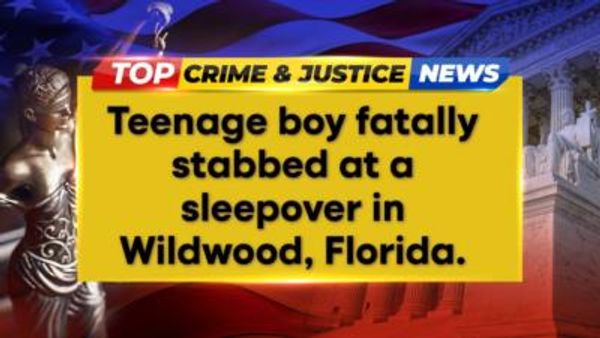
Content Corner
There’s something all over social media but I’m limited in what I can say about it. Last week, three teenage girls were charged in Queensland for allegedly torturing another teenage girl for several hours. There are legal restrictions against naming the alleged victim or offenders, but anyone who’s been on one of the major social media platforms would know their names and more. In fact, Crikey‘s lawyers are so concerned that we won’t even say which platform out of an abundance of caution.
Footage allegedly showing the incident and social media posts purportedly from one of the minors charged have gone mega-viral. I’m talking 250 million views of videos with the hashtag of the alleged victim’s name in a week. A related hashtag that references the alleged attack was trending yesterday at the eighth highest on the platform. Social media users from Scotland, the US and all over the world have created content saying they’re following what’s happening.
It’s a huge mess. Millions of people are being shown content in a completely unstructured way about an alleged youth crime in Queensland that’s not supposed to be public. The name, addresses, social media handles and images of people allegedly involved are being freely shared by users. Fake accounts are popping up in the names of the alleged offenders and victims that have hundreds of thousands of followers. Other existing accounts have pivoted their content to posting just about the alleged incident. The story is spreading in far-right and conspiracy groups as fodder for racist claims. Hell, I just watched multiple videos of people breaking into an empty house that they believed to belong to one of the people charged. Other people claim that the house of one of the alleged attackers was burnt down (I cannot verify this and am not saying it’s true, but I’m including it just to get a sense of the mania on the platform).
I asked the platform’s company about this and they told me that they were on top of it. They said that they removed the content once their staff were aware of it and now they’re proactively sweeping the platform to stop it from being reuploaded. For what it’s worth, I still found the footage and other gruesome content in about 15 seconds when I looked.
That the internet resembles the wild west when it comes to suppressing information is nothing new. The suppression of George Pell’s overturned sexual abuse conviction was ignored by international media and social media users alike. Christian Porter’s name trended on Twitter after the ABC published an article about an unnamed minister who had been accused of rape (an allegation Porter denies). Clearly, a lot of people online figure that they won’t face consequences for breaking the law (that’s assuming they’re even aware of them).
But are we really going to accept this? Do we want a world where a swarm of people and an algorithm effectively erase protections for vulnerable people? The young people involved in this almost certainly don’t have the resources to hold the tech companies or individual users who continue to host the content to account.
I don’t have a good way to finish this section or a proposed solution to this — I don’t know what the fix is without a drastic overhaul of how this all works. There’s always a call for more moderators and better technology, but that feels like fiddling around the edges. This has left me feeling so uneasy about the way we’ve strapped culture into algorithmic machines with direct connections to billions of people around the world. It feels like more and more of our lives are out of the hands of real people who are responsible (and can be held accountable) and are instead controlled by machines playing to our basest desires.
Hyperlinks
Teachers are using ChatGPT to create lesson plans, give feedback and even teach unfamiliar subjects
Here’s a good news story about artificial intelligence: teachers think that using it as a virtual assistant is helping them be better, more creative educators. (Crikey).
Revealed: how hackers used a tech giant to get inside Latitude Financial
Love getting an inside look at how big hacks happen. (AFR)
AI can fool voice recognition used to verify identity by Centrelink and Australian tax office
I like a lot of Nick Evershed’s work and this was no exception. (Guardian Australia)
Federal ministers, premiers and independent MPs use burner phones as TikTok ban nears and Clare O’Neil handed security review
Everyone seems to assume the federal government is set to ban TikTok on government devices any day now. The million-dollar question is if we would follow the US and consider a full ban. (The Australian)
Conspiracy theorists are harassing NSW election staff, accusing them of ‘election fraud’ for transporting ballot papers
Election workers are up there alongside teachers and nurses as professions that I feel very protective about. Leave them alone!!!!!!! (Crikey)
Trending
Everyone’s talking about pope in a coat. He’s cool, he’s chic, and he’s fake.

Last week, an image of Pope Francis wearing a large, white puffer jacket spread across the internet. Like many things on the internet these days, it wasn’t real. It was actually a creation of the newly released Midjourney 5 AI art tool.
BuzzFeed News spoke with the person who generated the image last week and posted it to Facebook where it was quickly spread across the internet. The author, Pablo Xavier, started experimenting with AI art originally to create images of his brother who passed away.
Garbage Day said it went super viral when someone tweeted it with the caption “OKAAYY”. (It’s not clear whether that user knew it was real or even whether they hoped that people who saw the tweet would think it was, which I think is part of why it’s a funny thing to address.)
It’s led to the latest round of consternation that this is a sign we’re in a post-truth future where AI tools mean there’s no way of knowing what we see is real. As you might think: When I saw that picture of the pope in a coat, I didn’t even consider if it was artificially generated.
I understand this reaction. After all, that pope looks real and, it must be said, absolutely dripped out with swag for days. But I wonder if this reaction is overblown because, well, don’t a lot of us already doubt whether what we see online is real?
When I scroll through my various feeds and see photographs, I already take them with a grain of salt because it’s simple enough to confuse people with a photo that wasn’t AI-generated. We all know that Photoshop exists. We even know that old-school photography tricks can mislead too. Remember the COVID-19 beach photography drama around the use of telephoto lenses to make it seem like everyone was closer together? AI is just another tool like this. When I tweeted this, people pointed out that AI is faster, easier, more flexible than these options — and they’re right. However, I don’t think those factors substantially change this issue.
Far from being a harbinger of a new era of misinformation, the next step in AI generation reminds us we’re already there. I have thoughts about how this continued erosion of truth will change how we all seek information and whom from — but that’s for another edition.







